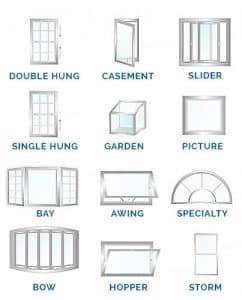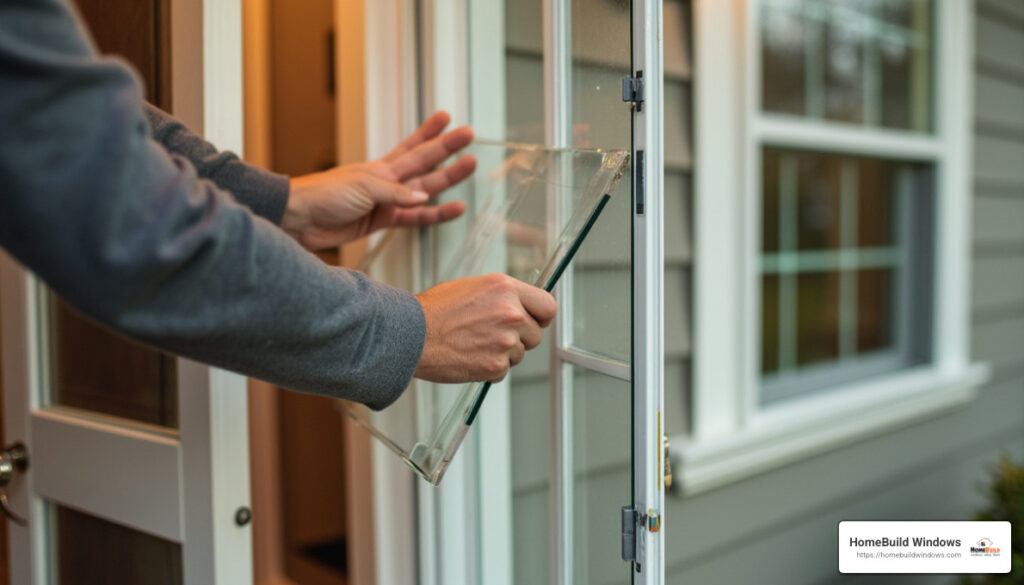Energy-saving windows have high thermal insulation properties. After all, even 25% of energy from a heated room can “escape” through leaky windows. In order to reduce this loss, energy-saving windows use some interesting technical solutions that increase comfort and satisfaction. Appropriate materials used in both the frame structure and the glass itself provide excellent insulation against unfavorable weather conditions and against urban noise.
Energy-Saving and Traditional Windows
First of all, it’s good to understand the difference between an energy-saving window and a standard window. If you consider their appearance, both types of windows look identical. However, there still remains the issue of extremely important parameters and design solutions that affect the thermal insulation properties of energy-saving windows. So what are these parameters?
Window Ratings Explained
Energy-efficient windows are already a standard in new single-family houses. Investors, as well as homeowners, understand the importance of the energy-saving properties of buildings and comply with building regulations which define minimum standards to achieve the required thermal insulation. Therefore, what’s important is looking at the values which measure energy efficiency in windows.
The heat transfer coefficient (or U-value) is the measurement that indicates the rate the heat transfers through a window. The lower the U-value the better thermal comfort in the house/apartment or in the office. The U coefficient is assigned to doors, windows, roller shutters and all building partitions such as roofs, walls or floors.
The heat transfer coefficient’s value indicates the total heat loss resulting from the difference in temperatures inside and outside the room. The U coefficient depends on the thermal resistance of the individual components of the window system, including:
- panes, or rather a glazing unit
- window profile
The next section of our article will explain all the different elements of the window structure that affect the heat transfer coefficient.

What Makes a Window Energy-Efficient?
The elements of the window structure that affect the thermal transmittance of the entire window, so the U-value, are:
- glazing – the glass or panes of a window; double-glazed windows have two panes, triple-glazed windows have three panes of glass, and so on…
- spacers (or space bars) – strips of plastic, metal, or foam that seal the space between panes of glass, providing the insulating gas within the window with structural integrity.
- coatings – a microscopic film that is placed on the window to increase its energy efficiency.
- frames – window profiles are usually made of plastic (PVC), wood or aluminum. Some of these materials have better thermal performance than others.
- operating type – there are different ways a window can open and close and this affects its overall insulation.
Energy-Efficient Windows – Glazing
The thermal insulation of the glazing has the greatest impact on the value of the window heat transfer coefficient (U-value) (due to the largest surface in the window area). Glass is also a better insulator than a window frame, so the greater part of the window surface, the more favorable the parameters of the entire structure.
There is a large selection of insulating glass units on the market with different values of the U heat transfer coefficient. The most frequently used double-glazed units are generally characterized by a coefficient of about 1.2-1.5. Triple-pane sets achieve values from 0.9 to 1. There are also four-pane window products with a heat transfer coefficient of up to 0.3, so their level is similar to the thermal insulation of modern walls. However, these are massive glazing units, which require a stronger structure of the window frame. However, even two-chamber (triple-glazed) glazing with a glass heat transfer coefficient of 0.5 will protect against cold almost as effectively as a brick wall.
Spacers in Energy-Saving Windows
The spaces between the individual glass panes in the glazing units are filled with argon gas, which conducts heat to a lesser extent than air. The specific design of energy-saving glazing significantly affects the proper thermal insulation of the entire window. In the most energy-efficient windows, the glazing has frames made of stainless steel and plastic instead of aluminum, as these materials conduct heat less. This also reduces the risk of water vapor condensation on the inner surface of the glazing.
What are Frames on Replacement Windows Made Of?
Energy-saving windows are not made up of only glass, but also properly installed and solid window frames, which prevent the formation of thermal bridges through which heat can escape. The width of the window profiles in the frame translates into energy-saving insulation, and improper installation can cause a loss of approx. 25% of heat in single-family houses and up to 45% in apartments and multi-family residential buildings. This is why it’s SO important to choose a professional home windows installation company that will do the job right.
Window profiles are usually made of plastic (PVC), wood or aluminum. Plastic frames are the most popular and the most budget-friendly. Their thermal insulation is related to the number of chambers (as PVC profiles have a chamber structure – several “channels” can be seen in the cross-section). The thermal insulation of a PVC window is also influenced by the material from which the reinforcement is made to stiffen the frame. Most often the material used is steel, but in energy-saving windows, sections made of plastic or glass fibers are used much more frequently. The thermal insulation parameters of the profile can be improved by filling its chambers with airgel, polyurethane foam or polystyrene.
In the case of wooden windows it is more difficult – here the frame is solid and usually there are no chambers inside where a heat insulator can be inserted (although some manufacturers offer polyurethane foam inserts). The easiest way to increase thermal insulation is to increase the thickness of the frame. Different types of wood also have different thermal insulation properties, the softer and lighter the wood, the better.
Due to the highest price, aluminum profiles are rare in single-family houses. Similarly to PVC products, they have a chamber structure, and thermal inserts are responsible for heat protection. They can be used to produce glazing of any size, which is important in modern architecture, where glass and/or windows play a key role.

Chicago Windows Replacement
For professional window installation and replacement, as well as expert advice from the best window contractors in the area – call HomeBuild today! We’ll help you with selecting and customizing your replacement windows so they suit your budget, taste and needs.




